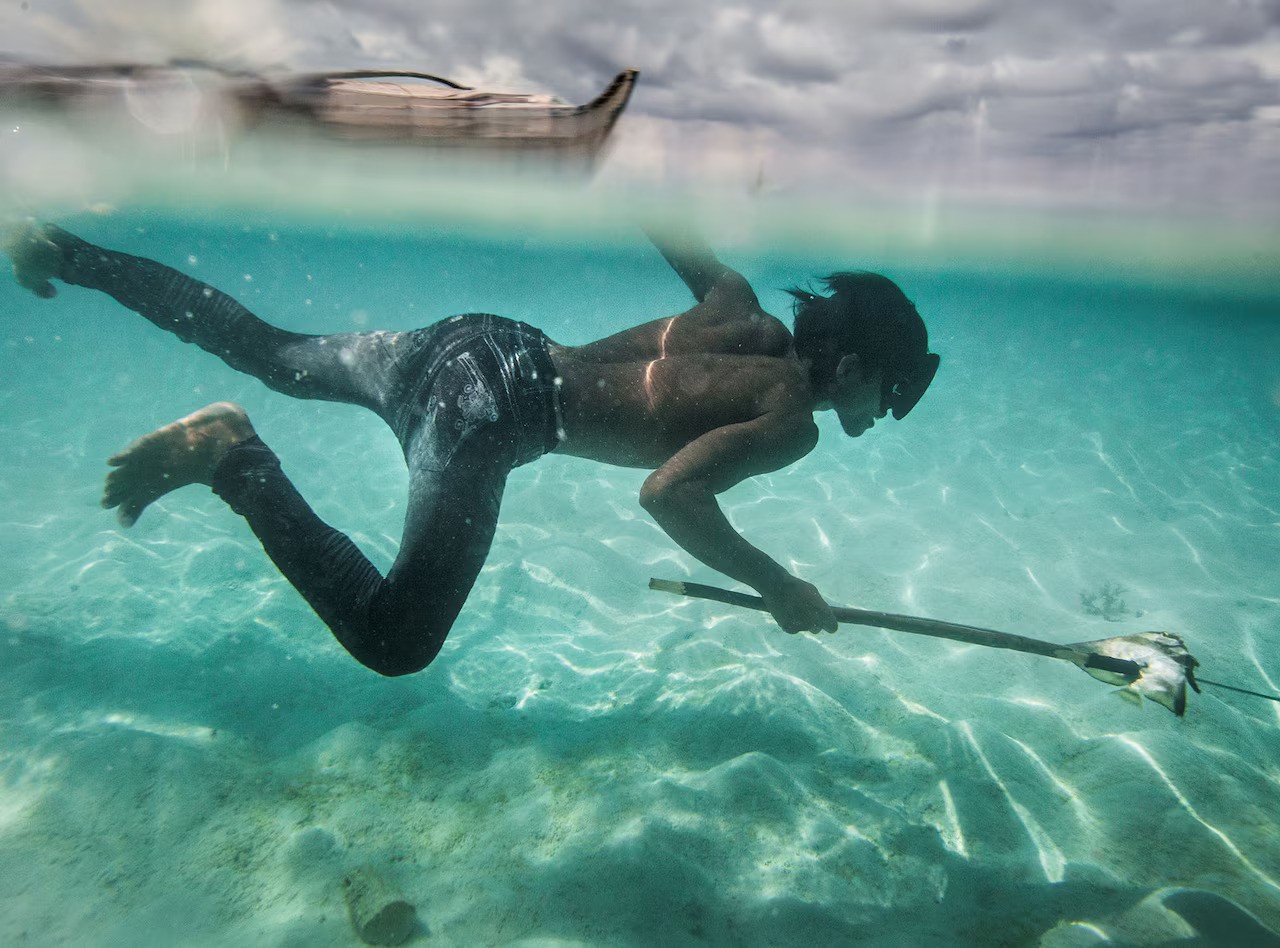Bajau tribe spends more than 60% of their day underwater. Having developed their underwater living- more than 1000 years, the Bajau tribe has developed spleens, 50% larger. The Bajau tribe has been living on silt houses, living off spearfishing: collecting shellfish.

Their lifestyle consequently has developed larger spleens, reservoirs for oxygenated blood cells. This evolution has helped them to spend more than 60 % of their day in the sea.
Prof. Rasmus Nielsen, University of California Berkeley, states, “We could ask the question: are there any genetic variants- are there any mutations- that are at a much higher frequency, that have changed their frequency specifically in the Bajau compared to other populations”.

Prof. Melissa Ilardo of the University of Copenhagen told BBC’s Inside Science Program, “When they’re diving in the traditional way, they dive repeatedly for about eight hours a day, spending 60% of their time underwater. So this could be anything from 30 seconds to several minutes, but they are diving to a depth of over 70m”.
Also Read: Top 10 Unsolved Mysteries
Prof. Melissa points out that the human dive response is triggered by holding your breath and submerging yourself in water. The heart rates slow down, leading to peripheral vasoconstriction. A blood vessel in the extremities gets smaller to store oxygenated blood for organs.

PHOTOGRAPH BY MATTHIEU PALEY, NATIONAL GEOGRAPHIC
According to Melissa Bajau, people thus have developed 50% larger spleen. Further research suggests that gene PDE10A was found to correlate with Bajau’s larger spleen size.
Rasmus Nelsen added: “It’s a wonderful example of humans can adapt to their local environment, but there may be some medical interest in this. There’s been a lot of interest in understanding hypoxia adaptations- adaptations to low levels of oxygen.
Studying the Bajau people will help study gene differences that change with different oxygen rates.










